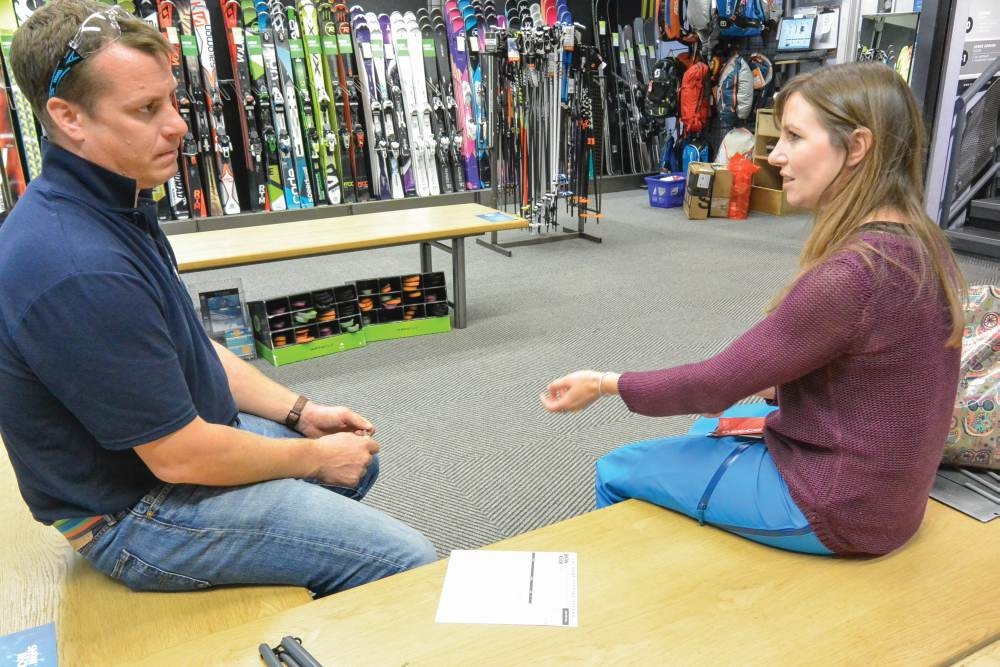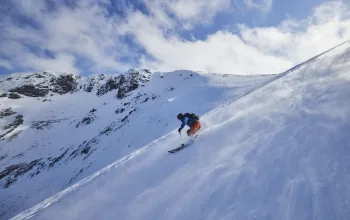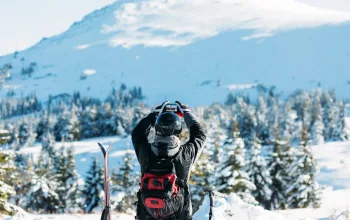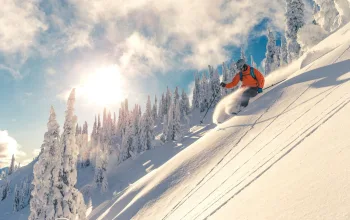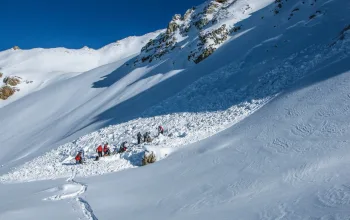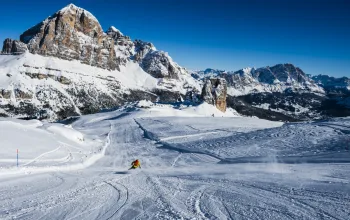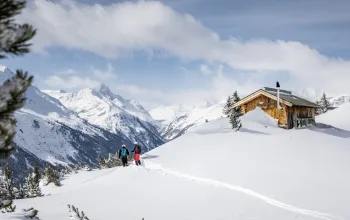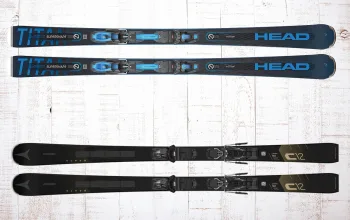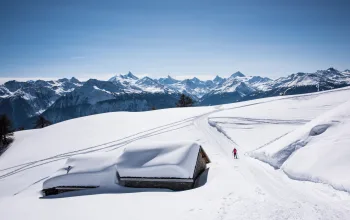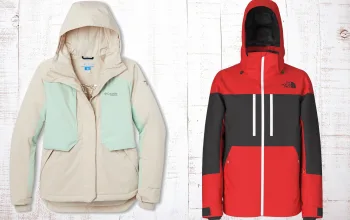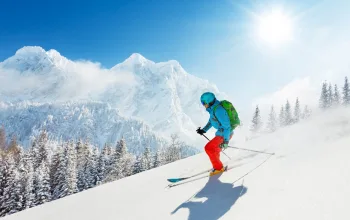What ‘type’ of rider are you?
Piste recreational
You keep to the marked slopes and love groomed, wide open runs.
Your skis are narrow at the waist, slightly rockered and easy to turn.
All-Mountain
You go anywhere and everywhere from groomed reds, to that powder stash in the forest. Your skis are wide with a rocker to help powder float.
Freerider
A piste is something to get home on. If it’s not deep you’d rather sleep. Your skis are wider than the Mekong Delta, with rockers of all shapes and sizes.
Park rider
If you’re not in the air you’re square. Who needs 300 kilometres of pistes? Skis are more uniform in width with the bindings mounted in the centre.
Race and piste performance
Speed is all and you carve corduroy like a hot knife. Skis vary in shape and size depending on the discipline, normally slalom or giant slalom style.
1. The ‘chat’
The most important factor when buying ski boots is fit – you might have a brand in mind, or even a model, but they might not necessarily be the right fit for your feet, so get measured up and be prepared to listen to the advice of the boot fitter. Be honest about your level as a boot that is too stiff could really inhibit your technique and force you to lean back. Ski boot flex ratings generally range from 80 (softer flex) to 130 (stiff flex) with something around 90 to 110 being considered ‘normal’ for a recreational skier who skis once or twice a year. Some boots have a hike or walk mode, either for comfort around town or for more extreme adventures on the mountain, so this should be considered and discussed before the fit process starts.
Skis are slightly different because many people know what they want when buying skis as they have read reviews and understand their level and rider type. If you don’t know what you want then describe your skiing in detail to the staff and they will match the ski to the boot – soft boot/easy ski, stiff boot/hard charger – all depending on where you want to ski.
2. Boot fitting
Sizes are based on a Mondo Point system and Vicky is measured up in the store. David’s experience as a boot fitter means he can take a look at Vicky’s feet and tell what brand might suit her immediately, as the shell widths and designs differ across the various manufacturers. David chooses a Salomon but has a Lange and a Tecnica out too so Vicky can try them all on and compare.
Then, with the inner boots removed, David uses three different ‘fit sticks’ to assess the space around the shells depending on Vicky’s needs – big space/more comfort, smaller space/much tighter fit for high performance.
It takes time to get the boot fit right so be prepared to spend at least 1.5 hours minimum in the store. Vicky tries the various models and walks around the shop floor to get a good feel for each boot.
Snow & Rock always recommend a custom foot bed (£67.00) but it’s possible to insert a good quality non-custom version (£36.00). The footbeds supplied with the boots as standard are not much more than display versions. There’s a machine that heats the foot beds and they are moulded around the feet which takes around 20 minutes for the shop staff to complete.
In some situations where people might have feet that don’t comply, it’s possible to custom mould the shell of certain boots to allow more personalisation of the fit. Most people are fine with a standard boot and custom foot bed.
3. Matching the skis
Once you’ve established your ‘rider type’ then it’s more of a matter of listening to advice from store staff, or reading up enough to make your own mind up. There are 100’s of different ski models on the market across scores of brands, with designs to suit where and how you ski. What are you going to do? Stay on the piste, freeride, get in the park, go ski touring or a bit of everything?
Vicky was looking at an all-mountain ski that’s wide at the waist and rockered in the tip, performing well on-piste but able to handle powder too. Colour and looks are important to a lot of skiers, so this is a factor when making a choice as well.
4. Bindings
Recreational piste skis generally come with a binding already mounted, so the decision is made for you. Otherwise it’s a matter of ensuring you get a binding with a DIN range (the spring release setting of the binding) that doesn’t push towards the upper end of the scale. If you are buying skis for touring then you will require a specialist touring binding such as the Marker Duke or Salomon Guardian. Park skis have bindings mounted in the centre, freeride can be placed a little back and piste skis are set to the recommended mark.
5. Ski poles
Measuring ski poles is straightforward and Snow & Rock have a gauge – grip the handle and ensure your arm is at right angles from the elbow. The more traditional way of seeing if a ski pole is the right length for you is to flip the pole upside down and grip it directly below the basket. Again, when your arm is at right angles, with the ski pole upright in front of you, (with the tip buried in the snow!) this is the correct size. But there are variations on the same theme.
Most skiers opt for a standard ski pole measured in the traditional way. But before deciding which is the right pole for you, consider the kind of skiing you’re intending on doing.
Freeride and off-piste skiing
It’s important to have a larger basket for off-piste work, so your poles don’t sink into the deeper snow. Some also come with a longer grip extending further down the pole, so they can be used to help when hiking up steep slopes.
Ski touring
In the same way telescopic poles can be useful when ski touring as you’re able to adjust the length according to whether you’re using them to help you walk up the mountain or ski down it.
Freestyle skiing
If you’re skiing a lot of moguls, normally skiers drop at least 5 centimetres from the traditional length of a pole. Park skiers tend to use much shorter poles again, sometimes around half the length of the ‘normal’ size.
Vicky and Rob were fitted by professional ski and boot fitter David Bolter at Snow & Rock’s Covent Garden store.
snowandrock.com



